Click on images to enlarge
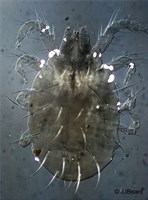
Fig. 1. Oligonychus mangiferus adult female (non-type) - dorsal habitus.
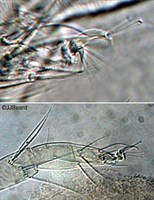
Fig. 2. Oligonychus mangiferus adult female (non-type) - detail of empodium and tarsus III (note six (pairs) proximoventral hairs).
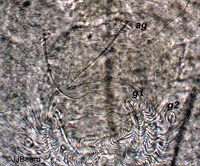
Fig. 3. Oligonychus mangiferus adult female (non-type) - detail of pattern of pregenital striae.
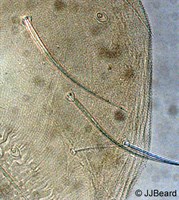
Fig. 4. Oligonychus mangiferus adult female (non-type) - detail of lobes on dorsal striae.
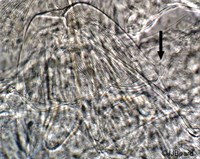
Fig. 5. Oligonychus mangiferus adult female (non-type) - detail of peritreme (arrow indicates tip).

Fig. 6. Oligonychus mangiferus adult female (non-type) - detail of tarsus I (indicating three proximal tactile setae, and one solenidion (s)).
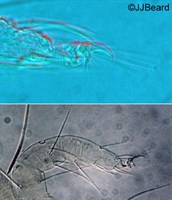
Fig. 7. Oligonychus mangiferus adult male (non-type) - detail of empodium and tarsus III.

Fig. 8. Oligonychus mangiferus adult male (non-type) - detail of tarsus I (indicating number of proximal setae).
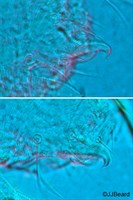
Fig. 9. Oligonychus mangiferus adult male (non-type) - detail of aedeagus.
Material examined
non-types
Taxonomy
Subfamily Tetranychinae
Tribe Tetranychini
Distribution
+Australia, Brazil, Chile, China, Egypt, El Salvador, Hawaii, India, Israel, Mauritius, Mozambique, *Pakistan, Peru, Reunion, South Africa, Taiwan, Thailand, Yemen
The original record of this species in Australia was provided by Davis (1968f). In this report, Davis has the specimens listed with the questionable identification of O. mangiferus .
Taxonomy Changes
Paratetranychus mangiferus Rahman & Sapra 1940
Oligonychus mangiferus (Rahman & Sapra) Pritchard & Baker 1955
Paratetranychus insularis McGregor 1950, synonymy Pritchard & Baker 1955
Paratetranychus terminalis Sayed 1946
Oligonychus terminalis (Sayed) Pritchard & Baker 1955, synonymy Zaher et al. 1984
Diagnosis
Female (Fig. 1)
- pregenital striae longitudinal (Fig. 3)
- spinneret of palp about as long as wide
- lobes on dorsal striae small, closely spaced (Fig. 4)
Male
Hosts
> 40 including: Annona diversifolia, A. squamosa (Annonaceae), Bauhinia acuminata (Caesalpinaceae), Calophyllum inophyllum (Guttiferaceae), Cassia fistula (Caesalpinaceae), Eucalyptus camaldulensis, Eugenia jambolana (Myrtaceae), Euphorbia longana (Euphorbiaceae), Ficus carica (Moraceae), Gossypium sp. (Malvaceae), Lagerstroemia indica, L. thorelli (Lythraceae), Litchi chinensis (Sapindaceae), Litsea laurifolia (Lauraceae), *Mangifera indica (Anacardiaceae), Musa sapientum (Musaceae), Persea americana (Lauraceae), Plumeria acutifolia (Apocynaceae), Prunus persica (Rosaceae), Psidium guajava (Myrtaceae), Rosa gallica (Rosaceae), Syzygium cumini, S. jambos, S. samarangense (Myrtaceae), Terminalia catappa (Combretaceae), Trichilia emetica (Meliaceae), Vitis vinifera (Vitaceae)
Similar Taxa
Species recorded in Australia:
- Oligonychus coffeae (Nietner, 1861)
- Oligonychus ilicis (McGregor, 1917)
- Oligonychus punicae (Hirst, 1926)
- Oligonychus ununguis (Jacobi, 1905)
Species not yet recorded in Australia:
- Oligonychus vitis Zaher & Shehata
Biology
This mite feeds mostly on the upper surfaces of the leaves of its hosts. Infestations reach a peak during late summer.
This is an important pest of mango and grape vines, and an occasional pest on litchi, in India. The infested part become yellow on mango, brownish on litchi, with the peak infestation occuring during October-December.
Heavy feeding on mango causes a drying of the leaves followed by premature leaf drop.
Oligonychus mangiferus is recorded as the second most important pest of pomegranate in Egypt.
References
+Davis, J.J. (1968f) Survey of Tetranychidae. Item 12 Qld. Dept. Agric.
McGregor, E.A. (1950) Mites of the family Tetranychidae. American Midland Naturalist 44: 257-420
Migeon, A. and Dorkeld, F. (2006-2017) Spider Mites Web: a comprehensive database for the Tetranychidae. http://www.montpellier.inra.fr/CBGP/spmweb
Pritchard, A.E. and Baker, E.W. (1955) A revision of the spider mite family Tetranychidae. Pacific Coast Entomology Society Memoirs 2: 1-472
*Rahman, K.A. and Sapra, A.N. (1940) Mites of the family Tetranychidae from Lyallpur with descriptions of four new species. Proceedings of the Indian Academy of Science, Ser. B 11: 177-196
Sayed, M.T. (1946) Contribution to the knowledge of Acarina of Egypt. V. Five new species of Tetranychidae. Bull. Soc. Fouad., Ier Entomol. 30: 79-97
Zaher, M.A., Soliman, A.R., Hanna, M.A. and Abou Awas, B.B. (1984) Phytophagous mites in Egypt (Nile Valley and Delta). Survey and ecological studies on phytophagous, predacious and soil mites in Egypt. P. 480 Prog. U.S.A. proj. EG-ARS 30: 1-181
Notes
See Notes for O. punicae for a discussion on this species-group.
Copyright © 2018. All rights reserved.